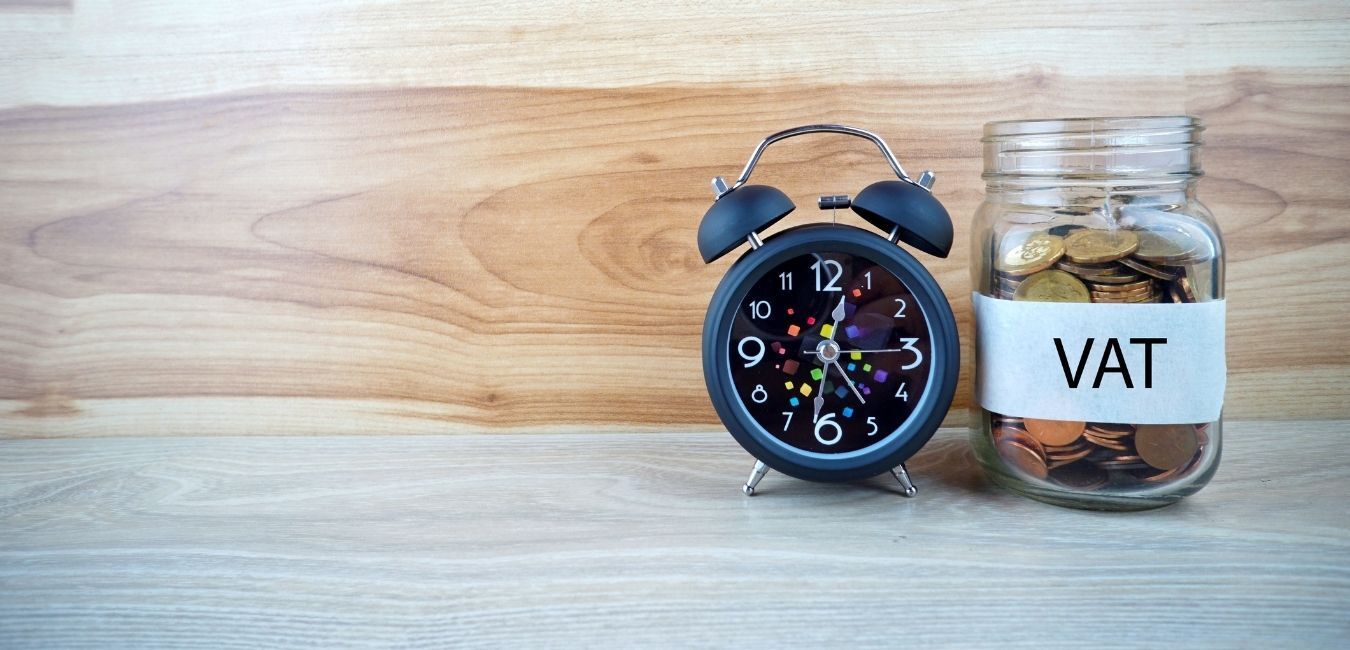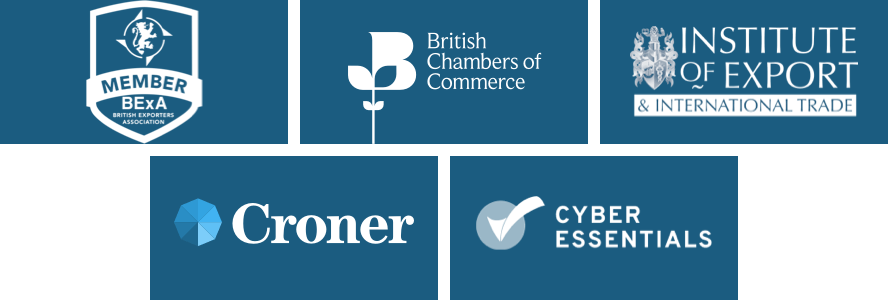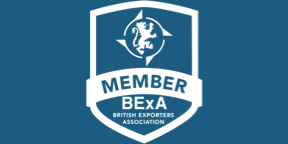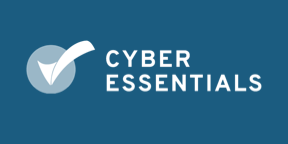How To...

Some exporters mistakenly perceive Incoterms® as mere jargon, a three-letter abbreviation that gets written into contracts and then appears on invoices and Customs declarations. However, mastering the use of Incoterms® can empower exporters, enabling them to save money, minimise delays, and enhance customer satisfaction.

Introduction One of the challenges facing businesses is how to be compliant with customs procedures and yet not incur duties and taxes when moving goods internationally on a temporary basis. In this and the next How to … article we will be looking at the steps to take to manage this part of your business. Part 1 looked at the movement of goods when they will be returned unchanged, so covering goods going to an exhibition, demonstration or for evaluation for example. Here we will review the different procedures available when you move goods for a process, such as repacking or repair. Why is it important? Since the UK left the Customs Union of the EU (1-01-2021) the number of temporary movements requiring customs declarations has increased significantly and sadly a lot of companies are not prepared for these changes and have incurred delays, rejected arrivals and/or high customs costs. Temporary movements include the movement of goods for a process, whether the process is a simple one, such as repacking, or to repair or overhaul an item through to the supply of materials and components to an overseas manufacturer. The aim is to legally avoid paying duties and taxes on goods being imported for a process and returned after process. As far as customs authorities are concerned these are new arrivals, unless you have an authorisation and evidence that the goods moved under a customs special procedure that permits the suspension or waiver of duties. Until the end of December 2020, UK shipments to and from the EU didn’t require special customs procedures because of the EU Customs Union permitting free circulation of goods. It’s seems that a lot of businesses are still unsure of what they should be doing instead. But what is it? As we discussed in Part 1, customs duties and taxes are used, not only to increase a country’s revenue, but also to control the import of foreign origin goods. The reason the goods are being imported is not taken into consideration unless the importer has an authorisation to use a special procedure. Just saying on your paperwork – “goods sent for repair” – will not magically avoid duties and taxes. It’s all about knowing what your business does internationally, having goods customs controls and managing the declarations made to customs at both export and import. Internationally, the World Trade Organisation (WTO) requires member countries to have a customs scheme to permit the temporary import and return of goods that have been exported for process in another country without the payment of duties. Within the WTO Revised Kyoto Convention (RKC) this is known as Outward Processing (OP) and Inward Processing (IP) and most countries call it this in their national customs procedures – one exception being the USA, who, though they do have procedures for processing goods it isn’t call OP and IP but relies on using Temporary Import Bonds (TIBs) and Chapter 98 codes. But the principle is the same. A company obtains customs approval, generally in advance of the movement of goods, to send and receive goods for processing. The approval means import customs duties are suspended (when goods imported to process) or waived (when goods are returned after process). Let’s review how this works in practice. How does it work? We need to divide the movement of goods for process into two parts: 1. The sender of the goods for process (Outward Processing) The sender (exporter) needs approval to export goods to be processed in another country (Outward Processing) if they want to bring the processed item back into the country without paying import duties and taxes. Therefore, Outward Processing is an authorisation to export one thing and bring back the processed item. This could be something that hasn’t fundamentally changed – it has been repacked, repaired, or upgraded – or something significantly changed, such as rolls of fabric reimported as garments. On return of the processed item the authorisation and evidence of export is required, and duty/taxes can be waived. 2. The receiver of the goods doing the process (Inward Processing) The receiver (importer) needs approval to import goods to be processed (Inward Processing) if they want to avoid paying import duties and taxes on arrival. Inward Processing permits goods to stay in the country for a set period of time with duties and taxes suspended. The importer will be authorised to discharge their liability for these duties usually by exporting the processed items, though other methods of discharge can also apply, e.g., scrapping the goods, supplying them to an authorised used (e.g., civil aircraft manufacture), transfer to another authorised party. Evidence that the goods have been processed and correctly discharged is vital. If the authorisation only approves re-export of the processed item within 6 months and you fail to do this, then you will be charged the duties that were suspended at the time of arrival. Again, the process could be repacking, a repair or upgrade, so not physical change to the goods, or something significantly changed, such as rolls of fabric reexported as garments. These processing procedures are also known as trade facilitation regimes as they are in place to facilitate international trade. It is important that the company applying for these special procedures understand what they need to be authorised for and have systems in place to manage them. Also, they may, especially with Inward Processing, have to provide a financial guarantee to secure the potential customs debt suspended under this regime. How to … It is worth mentioning that the two schemes are not interdependent, so an exporter can be approved to use OP regardless of whether the other party has IP and an importer can utilise Inward Processes without knowing if an OP scheme was used by the sender of the goods. Step 1 – understand your business needs. What type of process is involved and what will happen to the goods during this process? Check how much money you will save by using these special procedures. They require a lot of administrative controls, and it can be time consuming to use them correctly so the business must compare admin costs to duty/VAT savings. If your goods naturally have a zero-import duty rate, will you be able to also reclaim VAT paid at import? If yes, you may decide not to use a processing procedure. Step 2 - Detail your business requirements in advance of completing the application forms. The application form must include: • The company details, in the UK and EU this also needs your EORI (Economic Operator Identification number) • the commodity code of the products sent for process and • the commodity code of the products after process • usually, a value for the goods is needed which also require a financial guarantee being put in place • description of the process, time scale required and how you will identify the goods sent for process as the processed goods (e.g., serial numbers) or within the processed item • if replacement goods will be supplied, under a standard exchange procedure for example, ensure this is within your authorisation application • Summary of your internal procedures • Details of the customs points you may use at import/export Step 3 – check the authorisation on receipt from customs especially • Commodity codes approved • The through-put period, i.e. how long before the goods must be discharged/returned • The Customs Procedure Codes (CPC) to use on export/ import declarations • Record keeping requirements and other special terms S tep 4 - ensure you have written procedures and someone internally allocated responsibility to manage the processing approval. It is vitally important that you can control both the export customs declaration and the import customs declaration to ensure the correct authorisation number is used, the approved commodity codes and the correct Customs Procedure Codes (CPC). Ensure you are aware of the through-put period and if it seems the goods won’t be returned within the approved timeframe, seek and extension from customs. Any error in this area can lead to you having to pay the duty/taxes you think you have avoided. Step 5 – control all customs declarations and ensure you get copies of these customs entries. Maintain a separate record of goods send for process and when they are returned or otherwise discharged. Ensure any reports required by customs are sent in on time, in the correct format. Step 6 – keep a record of how much duty and VAT is being saved. This will be of interest to management as the scheme can be time consuming. Conclusion Remember, the use of a special procedure, like OP and IP, isn’t mandatory but to not do so will mean your goods will be treated as standard imports and be subject to customs duties and taxes. It’s all about saving money but we also need to be aware that to operating these procedures can be time consuming and expensive and that is why Step One is so important. Know the value of using OP/IP and keep checking it is relevant to your business needs. While you are here you may be interested in some Strong & Herd LLP training courses related to this topic, we offer a wide range of high quality training courses to support all importing and exporting activities. Temporary Imports & Exports Explained A Practical Guide to Applying for and using ATA Carnets

Introduction In this and the next How to … article we will be looking at the steps to take to manage this part of your business. Part 1 is looking at the movement of goods when they will be returned unchanged, so covering goods going to an exhibition, demonstration or for evaluation for example. Part 2 will review the different procedures available when you move goods for a process, such as repacking or repair. Why is it important? Since the UK left the Customs Union of the EU (1-01-2021) the number of temporary movements requiring customs declarations has increased significantly and sadly a lot of companies are not prepared for these changes and have incurred delays, rejected arrivals and/or high customs costs. Temporary movements of goods internationally can create confusion and misunderstanding in many quarters, leading to unnecessary cost, delay, and administrative burden not to mention downright contravention of statutory regulations both local and international. It is important to understand that there are mechanisms within customs regulations to permit the movement of goods temporarily without incurring such costs, it’s just that the company moving the goods needs to be aware of them and ensure the declarations are completed correctly. But what is it? Customs duties and taxes are used, not only to increase a country’s revenue, but also to control the import of foreign origin goods. But, if the goods arriving at the port or airport of arrival are commercial samples, the packing containers, goods being used to maintain previously imported products, broadcasting equipment, equipment required in a national disaster, etc why should they be subjected to the same level of controls, documentation, and customs duties? Good question … which the World Customs Organisation (WCO) worked on resolving to enhance international trade co-operations. How does it work? The temporary movement of goods has always been challenging as it involves at least 4 different customs declarations: a) The export declaration b) An import declaration c) The re-export declaration d) The re-import declaration At two of these points (b) and (d) there is also the concern that you may be charged import customs duties and taxes unless you use a special procedure. The exporting company should work with someone in the importing country to ensure that customs formalities can be arranged correctly. As we are looking at the movement of goods that will be returned unaltered then we are looking at relevant international regulations such as the ATA Carnet scheme and Temporary Admission procedures also know as Temporary Imports. Customs duties and taxes don’t just vanish when we use these procedures, so we also must consider how we guarantee potential duty at stage 2. Unfortunately, customs will not just take our word that its “temporary” and waive all charges. How to …. Step 1 The ATA Carnet, also known as a passport for goods, is a simple way of moving goods that are not undergoing any process into and out of other countries without needing full customs declarations or the payment of duty and taxes. Not available to all destinations it also has some limitations and can be expensive to obtain. An ATA Carnet is suitable for both hand carried consignments and unaccompanied freight, but it does not replace the need for export or import licences though, it only covers customs declarations. An ATA Carnet is applicable for three different types of temporary exports and though it: Professional equipment, such as equipment going out to test machinery already overseas Commercial samples, where the samples are high value and being returned to the exporter Exhibitions and demonstrations There is an issuing fee for the ATA Carnet, payable to the issuing authority in the exporter’s country (this is a Chamber of Commerce in the UK) and also a guarantee to put down or insure to cover potential import duty and taxes in case the goods do not leave the import country. The ATA Carnet permits the return of goods within 12 months, though this can be reduced at the time of import by the customs authorities so ensure you check the vouchers/tickets within this passport and don’t assume 12 months will be ok. Step 2 If the country is not a signatory to the ATA Carnet agreement, or the reason for export is not covered by the Carnet system, or the goods need to be out of the country for longer than 12 months, or, you find the costs of the Carnet too expensive then you have to review more conventional customs procedures. Remember there are 4 customs declarations to consider – we will look at these in the next 4 steps. Step 3 a) - Export: There are temporary export procedures available in all countries’ customs legislation. In the UK this involves selecting the correct procedure and additional procedure code to declare on the export customs declaration. The normal temporary export procedure and additional procedure for goods returning unaltered is 23-00-000. This permits the return/ re-import to come in under returned goods relief waiving both import duty and VAT, also long as the original exporter retained ownership and the goods did not undergo a process. Quick easy. Step 4 b) – Import: This is the complicated one. There are several Temporary Admission procedures depending on the type of arrival and the length of time the goods will remain in that country. But all will require security or a guarantee to be put in place for potential duty/taxes in case the goods remain in the country. Unfortunately, there is no hard and fast rule for dealing with this, it can depend on the type of equipment, whether it is hand carried or freighted in, the length of time of the stay, whether you have representation in that country and to which country the goods are exported. It may be possible to set up a Temporary Import Bond (TIB) or secure against an established guarantee, such as a deferment account at the import customs point. Alternatively, you may have to pay the money and them reclaim from customs on leaving the country? Will a company in that country do this for you - either your client or freight forwarder? Step 5 c) – Re-export: It is vital, as we stressed with the ATA Carnet procedure, that the time limit imposed on the temporary import must be adhered to or the duty/tax will become due. If the goods are hand-carried, then a simplified export declaration may be required which is usually completed by your representative with customs’ help (though some countries insist on getting a freight agent involved). Any bonds, guarantees, securities must be cancelled, and any monies paid refunded. When the goods are freighted out, the responsibility for correctly re-exporting the goods rests with the freight agent. He should have clear instructions, especially if the bond/guarantee to be cancelled is in your name not his. Evidence of export, e.g., a stamped copy of the shipping invoice, should be requested in case the foreign customs authorities seek import duties/taxes at a later date. Step 6 d) – Re-import: If we’ve done a) correctly and have the evidence of the original export then this is fairly straightforward. The important thing here is to ensure the goods are entered as Returned Goods (RGR) so no import duty/VAT is payable. There is a standard time limit of 3 years to re-import goods into the UK under RGR. In the UK this is controlled using the correct procedure and additional procedure 6123F01 or 6123F05 . The rules for these can be found within the UK trade tariff volume 3 for CDS- https://www.gov.uk/government/collections/uk-trade-tariff-volume-3-for-cds--2 It is important to read through to understand which additional procedure is correct for the re-importation of the goods. Conclusion It is important to understand that there are mechanisms within customs regulations to permit the movement of goods temporarily without incurring such costs, it’s just that the company moving the goods needs to be aware of them and ensure the declarations are completed correctly and not just send goods hoping for the best outcome. While you are here you may be interested in some Strong & Herd LLP training courses related to this topic, we offer a wide range of high quality training courses to support all importing and exporting activities. Temporary Imports & Exports Explained A Practical Guide to Applying for and using ATA Carnets










